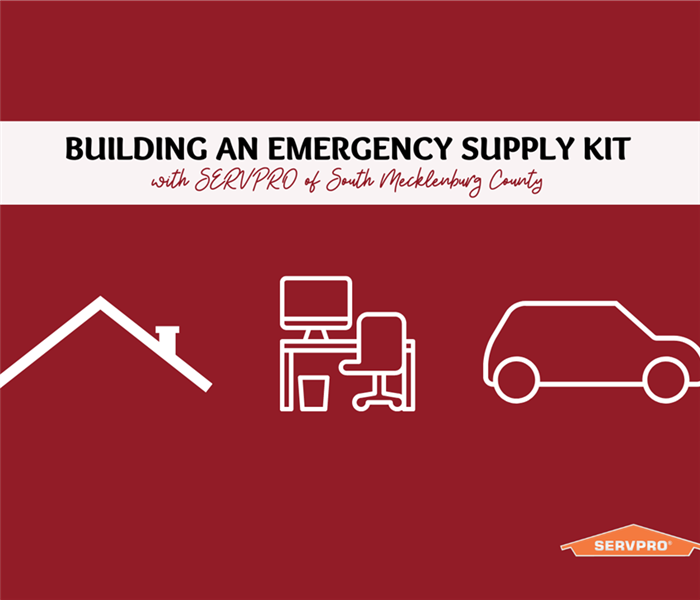What Goes in an Emergency Supply Kit?
6/21/2021 (Permalink)
Being prepared for an emergency is essential. When there is a flood, fire, or other disasters it is easy to get overwhelmed and panic, but when you have an emergency preparedness kit you can relax knowing you and your family have supplies for the next few days.
So what goes into a disaster supply kit? It is usually a collection of basic household items that are essential in an emergency. These supplies should be able to sustain your family for a few days if necessary. As you bring together all of your items together the best way to store them is in easy-to-carry containers like plastic bins or duffel bags.
The Basics
When building your kit, start with the basics. These are items that you cannot go without if you are stuck without any other supplies for two days. The things on this list should be included in your home, work, and car emergency kit. These items should be stored in a water-tight container to ensure that they will not be damaged in the event of a water-related emergency.
- Water (one gallon per person per day)
- Food (at least three days of non-perishable food)
- Battery-powered radio
- Flashlight
- First aid kit
- Extra batteries and a battery-powered phone charger
- Whistle
- Masks (to filter contaminated air)
- Can opener
- Wrench or pliers (to turn utilities on or off)
- Moist towelettes, garbage bags, and plastic ties.
Additional Supplies
Once you have the basics in your emergency kit, you can take it a step further to keep you and your family more comfortable. Below is a shortlist of the most common supplies to add to an emergency kit, however, your essentials list may look a bit different. Sit down with your family and discuss the items that each family member might require in an emergency.
- Prescription and nonprescription medications
- Eyeglasses
- Infant formula, bottles, diapers, and wipes
- Pet food and extra water
- Cash
- Insurance policies, identification, bank account records, and other important documents (save these electronically and in a fireproof & waterproof container)
- Sleeping bags
- Extra shoes and clothes
- Fire extinguisher
- Matches
Car Safety
Whether you are planning a long trip, or just preparing for an unexpected emergency on your normal daily drive, having an emergency preparedness kit in your car could save your life. Your kit should include the same basics of a normal kit, but you also need to add a few more items.
- Jumper cables
- Flares or reflective cones or triangles
- Ice scraper
- Car cellphone charger
- Blanket
- Map
- Sand or cat litter for traction
Where to Store Your Kit
Knowing where to keep your kit can be difficult. We can’t always know where we will be when an emergency strikes, so it is best to make multiple kits for different locations. The largest kit with the most items should be kept in your home. This kit should be kept in a designated place so that all family members know where to find the kit in case of an emergency. It is best to keep this kit on a shelf in case water enters your home. The second kit should be stored in your place of work. Your work kit should include the basics to sustain you for at least 24 hours, as well as a pair of comfortable shoes. Finally, you should store an emergency kit in your car. This kit should include supplies for multiple different environments as you could be stuck in the snow or the heat.
Maintain Your Kit
Just putting your kit together and leaving it could mean by the time you need it your supplies are no longer safe to use. It is important to go through your emergency kit once a year to ensure food or medications are not out of date. Rethinking your supply kit every year is essential. As children are born and grow older, pets are brought into the family, and health needs change, your emergency-ready kit should too.
SERVPRO of South Mecklenburg County understands that emergencies can be scary and can leave you unsure of what to do next. Once you and your family are safe and there is no danger present, be sure to call us at (704) 840-6112 as soon as possible. Any damage that may have occurred in your home should always be remediated as soon as possible.
For more information on all aspects of your emergency ready kit, head to Ready.gov. Learn more about car safety here.
Want to know more about us? Please check out our other pages:






 24/7 Emergency Service
24/7 Emergency Service
